Yanyang Wang
Topology-inspired Cross-domain Network for Developmental Cervical Stenosis Quantification
Sep 18, 2023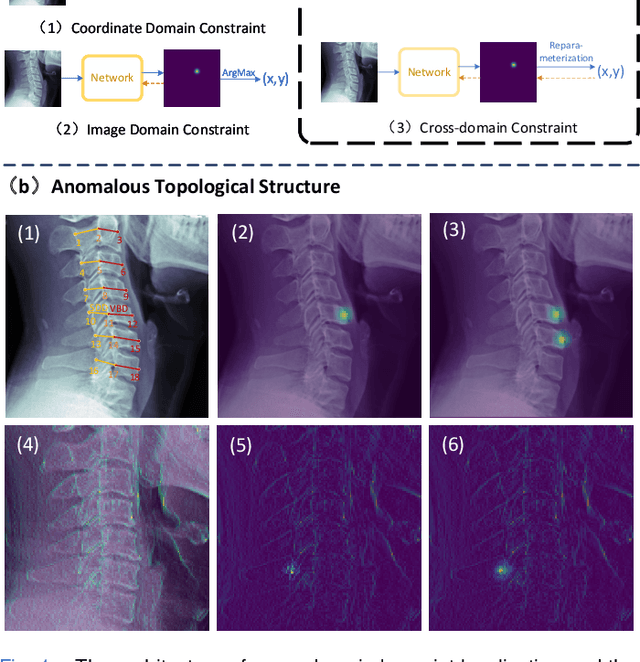
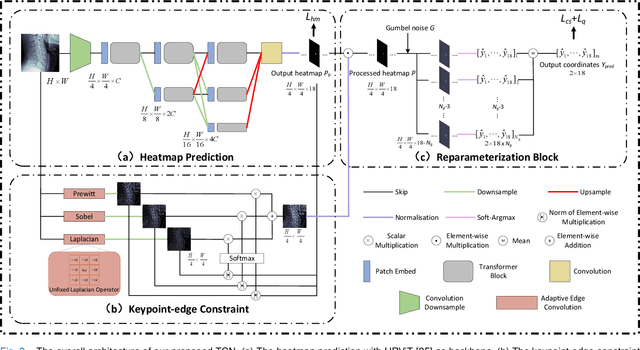

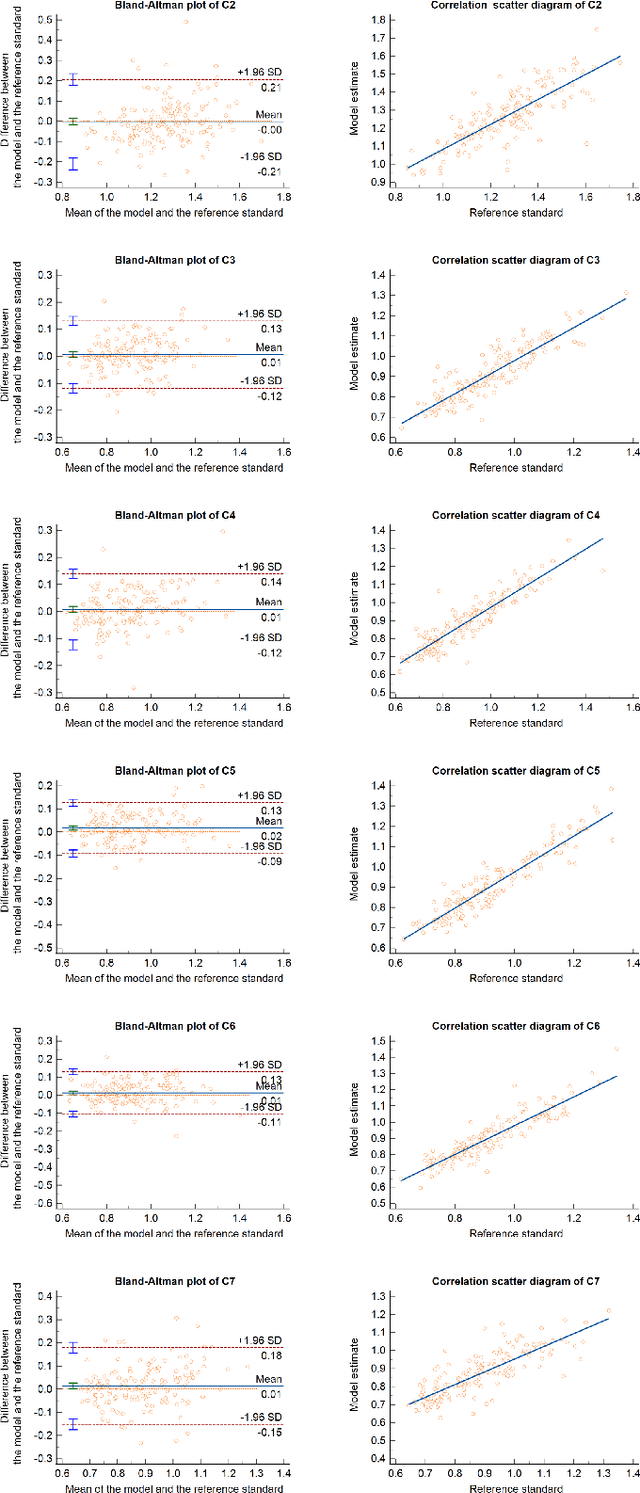
Abstract:Developmental Canal Stenosis (DCS) quantification is crucial in cervical spondylosis screening. Compared with quantifying DCS manually, a more efficient and time-saving manner is provided by deep keypoint localization networks, which can be implemented in either the coordinate or the image domain. However, the vertebral visualization features often lead to abnormal topological structures during keypoint localization, including keypoint distortion with edges and weakly connected structures, which cannot be fully suppressed in either the coordinate or image domain alone. To overcome this limitation, a keypoint-edge and a reparameterization modules are utilized to restrict these abnormal structures in a cross-domain manner. The keypoint-edge constraint module restricts the keypoints on the edges of vertebrae, which ensures that the distribution pattern of keypoint coordinates is consistent with those for DCS quantification. And the reparameterization module constrains the weakly connected structures in image-domain heatmaps with coordinates combined. Moreover, the cross-domain network improves spatial generalization by utilizing heatmaps and incorporating coordinates for accurate localization, which avoids the trade-off between these two properties in an individual domain. Comprehensive results of distinct quantification tasks show the superiority and generability of the proposed Topology-inspired Cross-domain Network (TCN) compared with other competing localization methods.
Data-iterative Optimization Score Model for Stable Ultra-Sparse-View CT Reconstruction
Aug 28, 2023



Abstract:Score-based generative models (SGMs) have gained prominence in sparse-view CT reconstruction for their precise sampling of complex distributions. In SGM-based reconstruction, data consistency in the score-based diffusion model ensures close adherence of generated samples to observed data distribution, crucial for improving image quality. Shortcomings in data consistency characterization manifest in three aspects. Firstly, data from the optimization process can lead to artifacts in reconstructed images. Secondly, it often neglects that the generation model and original data constraints are independently completed, fragmenting unity. Thirdly, it predominantly focuses on constraining intermediate results in the inverse sampling process, rather than ideal real images. Thus, we propose an iterative optimization data scoring model. This paper introduces the data-iterative optimization score-based model (DOSM), integrating innovative data consistency into the Stochastic Differential Equation, a valuable constraint for ultra-sparse-view CT reconstruction. The novelty of this data consistency element lies in its sole reliance on original measurement data to confine generation outcomes, effectively balancing measurement data and generative model constraints. Additionally, we pioneer an inference strategy that traces back from current iteration results to ideal truth, enhancing reconstruction stability. We leverage conventional iteration techniques to optimize DOSM updates. Quantitative and qualitative results from 23 views of numerical and clinical cardiac datasets demonstrate DOSM's superiority over other methods. Remarkably, even with 10 views, our method achieves excellent performance.
Two-and-a-half Order Score-based Model for Solving 3D Ill-posed Inverse Problems
Aug 17, 2023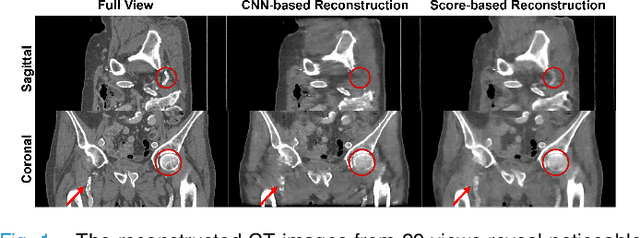

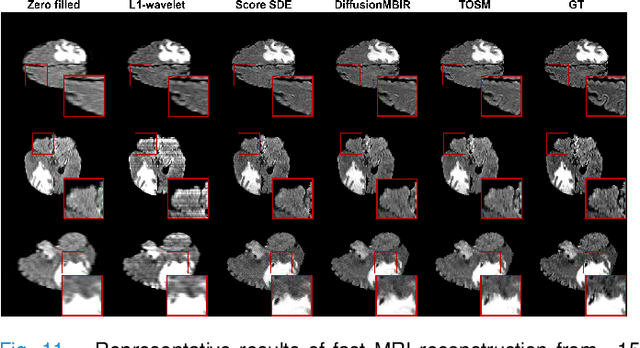

Abstract:Computed Tomography (CT) and Magnetic Resonance Imaging (MRI) are crucial technologies in the field of medical imaging. Score-based models have proven to be effective in addressing different inverse problems encountered in CT and MRI, such as sparse-view CT and fast MRI reconstruction. However, these models face challenges in achieving accurate three dimensional (3D) volumetric reconstruction. The existing score-based models primarily focus on reconstructing two dimensional (2D) data distribution, leading to inconsistencies between adjacent slices in the reconstructed 3D volumetric images. To overcome this limitation, we propose a novel two-and-a-half order score-based model (TOSM). During the training phase, our TOSM learns data distributions in 2D space, which reduces the complexity of training compared to directly working on 3D volumes. However, in the reconstruction phase, the TOSM updates the data distribution in 3D space, utilizing complementary scores along three directions (sagittal, coronal, and transaxial) to achieve a more precise reconstruction. The development of TOSM is built on robust theoretical principles, ensuring its reliability and efficacy. Through extensive experimentation on large-scale sparse-view CT and fast MRI datasets, our method demonstrates remarkable advancements and attains state-of-the-art results in solving 3D ill-posed inverse problems. Notably, the proposed TOSM effectively addresses the inter-slice inconsistency issue, resulting in high-quality 3D volumetric reconstruction.
Semi-supervised Object Detection: A Survey on Recent Research and Progress
Jun 25, 2023Abstract:In recent years, deep learning technology has been maturely applied in the field of object detection, and most algorithms tend to be supervised learning. However, a large amount of labeled data requires high costs of human resources, which brings about low efficiency and limitations. Semi-supervised object detection (SSOD) has been paid more and more attentions due to its high research value and practicability. It is designed to learn information by using small amounts of labeled data and large amounts of unlabeled data. In this paper, we present a comprehensive and up-to-date survey on the SSOD approaches from five aspects. We first briefly introduce several ways of data augmentation. Then, we dive the mainstream semi-supervised strategies into pseudo labels, consistent regularization, graph based and transfer learning based methods, and introduce some methods in challenging settings. We further present widely-used loss functions, and then we outline the common benchmark datasets and compare the accuracy among different representative approaches. Finally, we conclude this paper and present some promising research directions for the future. Our survey aims to provide researchers and practitioners new to the field as well as more advanced readers with a solid understanding of the main approaches developed over the past few years.
 Add to Chrome
Add to Chrome Add to Firefox
Add to Firefox Add to Edge
Add to Edge